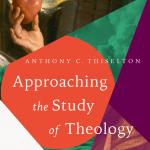Paul Borgman and Kelly James Clark
Written to be Heard: Recovering the Messages of the Gospels
Grand Rapids MI: William B. Eerdmans, 2019.
Available at Eerdmans and Koorong
By Laura Thierry
Written to be Heard: Recovering the Messages of the Gospels is written in view of the premise that ‘The gospels — Mark, Matthew, Luke-Acts, and John — … were never intended to be read’ (3). Paul Borgman and Kelly James Clark join forces to perform an aural ‘literary reading’ of the gospels, contending for their nature as aural documents, intended for aural cultures. That is, that the meaning of these texts is, to some extent, within their form – and so one can only grasp what they are saying when one reads them as a listener, and not just as a reader.
The book is built upon three primary principles. Firstly, in order to understand the gospel texts a reader must “read to “hear” the distinctive shape of each gospel crafted through repeated hearing cues” (p. 5). As aural cultures practiced repetition as a built in memory and meaning-making device, today’s readers must learn to pick up on repetition, chiasms, and various other interior devices in order to understand the author’s intent. Secondly, we must “listen to each Gospel as a unified whole within its own textual and cultural context” (p. 6). As the original hearers would likely have interpreted each gospel through its own meaning (Matthew, not Paul, explains Matthew’s view of righteousness), so we also ought to “listen carefully to the unique voice of each of the gospel writers for their distinctive visions” (p. 7). Thirdly, readers need to “be aware of and set aside prior religious beliefs and commitments that can distort the voice of each gospel” (p. 7). While also acknowledged that “we can never completely divest ourselves of our biases”, the call to seek to understand the text on its own grounds stands out as the primary goal of the book’s aural reading. It then proceeds to serve as a guidebook or commentary on just such a ‘pre-literate’ literary reading of the texts of Mark, Matthew, Luke, Acts, and John, respectively.
The picture painted of the meaning acquired by reading ‘aurally’ is rich and insightful. However, this book does not (as some might anticipate) primarily focus on actually reviving aural/oral practices of engaging with the gospels. Such an aim stands outside the intended purposes and genre of this particular book. As such, it would appear that Written to be Heard is designed more to provide a theoretical understanding of the gospels as aural narratives within their own unique textual and contextual contexts in a manner that takes seriously their intrinsic meaning-making and memory-forming structures and methods, than as a primer for reviving oral practices within the life of the Church. As such it could serve as a beneficial text for the study of hermeneutics or an addition to a New Testament syllabus. Overall, I recommend it as an insightful theoretical study of the aural nature and meaning of the gospels.
Laura Thierry a PhD student at Ridley College, researching medieval hagiography, Christology, and theology of the body.












